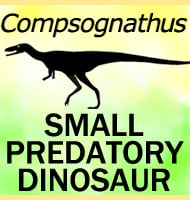In Depth
With the holotype remains first discovered in 1989 and later placed within the genus Minmi in 1996, new studies in the twenty-first century revealed these fossils to actually belong to a new genus distinct from Minmi. This resulted in the 2015 naming of Kunbarrasaurus, a physically small genus of ankylosaur that lived in Australia around the boundary of the early and late Cretaceous.
The key physically characteristic that identified Kunbarrasaurus as a genus seperate from Minmi is the fact that the top of the skull is actually very flat by comparison. In addition to this, Minmi is regarded as a primitive member of the ankylosauridae, the group better known as the club tailed armour plated dinosaurs. The end of the tail of Kunbarrasaurus is still missing at the time of writing, but other features in the skeleton indicate that Kunbarrasaurus was actually too primitive in form to be an ankylosaurid, but also possibly not even a nodosauird, the sister group to the ankylosaurid dinosaurs that lacked the distinctive club tails. For this reason, Kunbarrasaurus is currently regarded as a basal member of the Ankylosauria, similar to but not advanced in physical form enough to be a distinct ankylosaur or nodosaur.
Gut contents were also found in the Kunbarrasaurus holotype and these confirm that Kunbarrasaurus ate plants, and ate everything from the leaves, to the fruits and seeds. The latter of these seem to have been swallowed whole.
Kunbarrasaurus would have had its body covered in bony osteoderm armour, and this would have been the last line of defence against the teeth and claws of predatory dinosaurs such as Australovenator that would have been roaming around Australia at the same time as Kunbarrasaurus.
Further Reading
- Cranial osteology of the ankylosaurian dinosaur formerly known as Minmi sp. (Ornithischia: Thyreophora) from the Lower Cretaceous Allaru Mudstone of Richmond, Queensland, Australia. - PeerJ - Lucy G. Leahey, Ralph E. Molnar, Kenneth Carpenter, Lawrence M. Witmer & Steven W. Salisbury - 2015.









